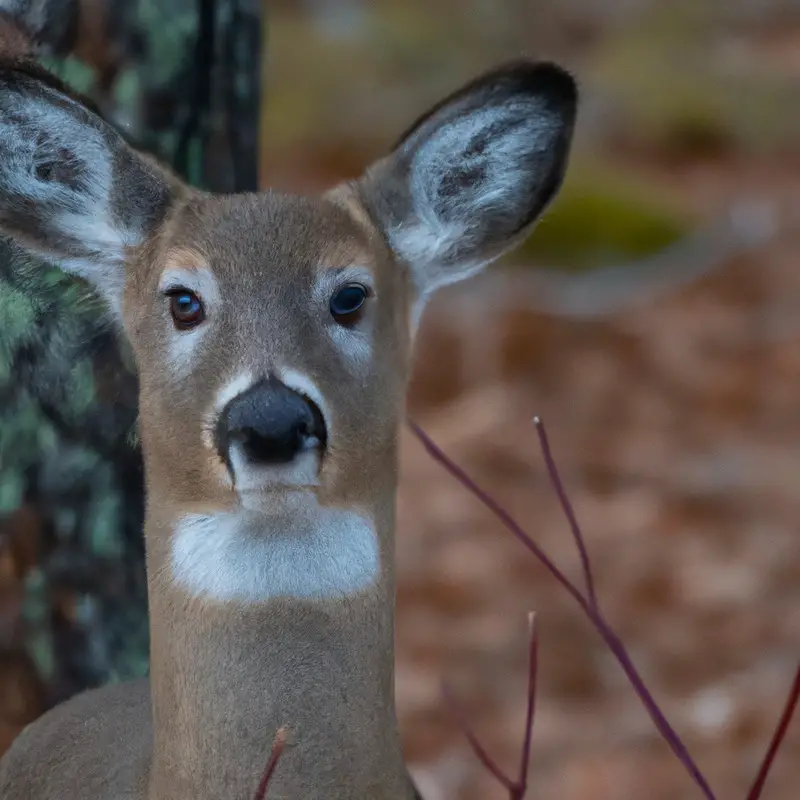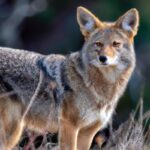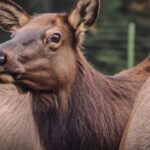Key Takeaways:
- 1) White-tailed deer hunting in Arkansas offers great opportunities for outdoor enthusiasts.
- 2) Arkansas has a diverse habitat and abundance of white-tailed deer making it a popular hunting destination.
- 3) Hunters in Arkansas must adhere to specific regulations and obtain the necessary licenses for white-tailed deer hunting.
- 4) Hunting white-tailed deer in Arkansas requires careful planning and knowledge of hunting strategies to increase chances of success.
Are you ready to embark on the ultimate hunting adventure?
Picture this: you’re deep in the heart of the beautiful Arkansas wilderness, the crisp autumn air on your cheek as you scan the horizon.
Suddenly, a majestic white-tailed deer emerges, its antlers gleaming in the golden sunlight.
With your heart racing and adrenaline pumping, you take aim.
Hunting white-tailed deer in Arkansas is not only a thrilling pursuit but also a time-honored tradition.
But where do you begin?
Don’t worry, I’ve got you covered.
In this comprehensive guide, we’ll explore everything from the hunting seasons and regulations to the best gear and techniques for a successful hunt.
So, grab your hunting rifle and let’s dive in!
Aspect | Regulations in Arkansas |
|---|---|
Season Dates | Varies based on hunting zone, but generally between October and January |
Licenses and Permits | Arkansas hunting license and deer permit required |
Bag Limit | Generally, hunters are allowed to harvest a maximum of 6 deer per season, but restrictions may apply in some zones |
Hunting Methods | Legal hunting methods include archery, muzzleloader, and modern firearm |
Tagging and Reporting | All deer must be tagged immediately and reported within 24 hours of harvest |
Hunting Zones | Arkansas is divided into multiple hunting zones with specific regulations |
Hunting Hours | Hunting is typically allowed from 30 minutes before sunrise to 30 minutes after sunset |
Public Land Hunting | Arkansas provides public land areas for deer hunting |
Special Regulations | Some zones have additional regulations such as antler restrictions |
Hunting Safety | Hunters must follow all safety guidelines, wear blaze orange, and use tree stands safely |
Hunting White-tailed Deer in Arkansas
1. Hunting Season and Regulations in Arkansas
In Arkansas, the hunting season for white-tailed deer typically begins in September and runs until February. However, specific dates may differ depending on the type of hunting (archery, muzzleloader, or modern gun).
It’s important to familiarize yourself with the Arkansas Game and Fish Commission’s regulations and guidelines for hunting deer.
These regulations cover topics such as bag limits, licensing requirements, hunting zones, and approved hunting methods. It’s crucial to adhere to these regulations to ensure a safe and ethical hunting experience.
Always respect private property boundaries and obtain any necessary permissions before hunting.
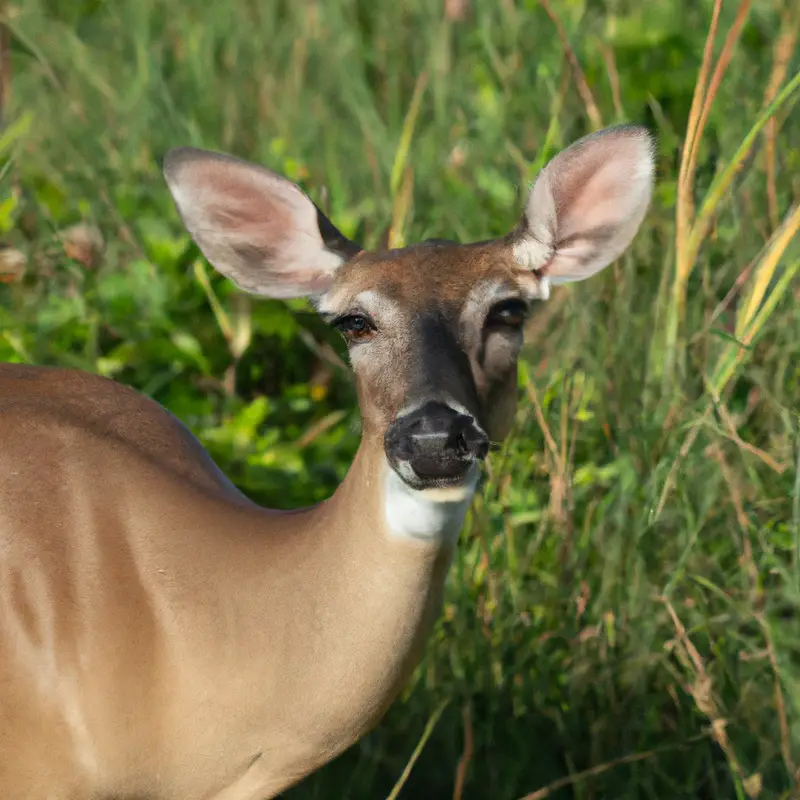
1.1 Archery Season
1.1 Archery Season
Archery season is an exciting time for deer hunters in Arkansas.
During this season, hunters can use bows and crossbows to pursue white-tailed deer.
It typically begins in October and extends into November, providing a unique hunting experience.
Here are some key points to keep in mind for a successful archery season:
- Check the regulations: Before heading out, make sure to review the hunting regulations and obtain the necessary licenses and permits. This will ensure that you are in compliance with the law.
- Practice your skills: Archery requires precision and accuracy. Take the time to practice your shooting skills before the season begins. This will help increase your chances of making a clean and ethical shot.
- Scout your hunting area: Familiarize yourself with your hunting area prior to the season. Look for signs of deer activity such as tracks, rubs, and scrapes. This will give you a better understanding of the deer’s behavior and help you choose the best hunting spots.
- Use camouflage and scent control: Deer have keen senses, especially their sense of smell. Invest in quality camouflage clothing and practice scent control techniques to minimize your scent and increase your chances of remaining undetected.
- Stay patient and focused: Archery hunting requires patience and perseverance. Be prepared to spend long hours in the stand, waiting for the perfect opportunity. Stay focused and attentive, as deer can appear unexpectedly and disappear just as quickly.
- Practice ethical hunting: Always prioritize safety and ethical hunting practices. Take clean shots within your effective range and aim for vital organs to ensure a quick and humane kill. It is also important to respect wildlife and the environment.
1.2 Muzzleloader Season
During the 1.2 Muzzleloader Season in Arkansas, you have the opportunity to pursue white-tailed deer in a unique and challenging way.
This season typically occurs after the regular firearms season and provides hunters with a chance to use muzzleloader firearms.
Muzzleloader hunting requires skill and precision, as the range is typically limited compared to modern firearms.
It offers a more traditional hunting experience and can be a rewarding way to connect with nature.
Make sure to familiarize yourself with the specific regulations and restrictions for this season before heading out into the field.
Happy hunting!
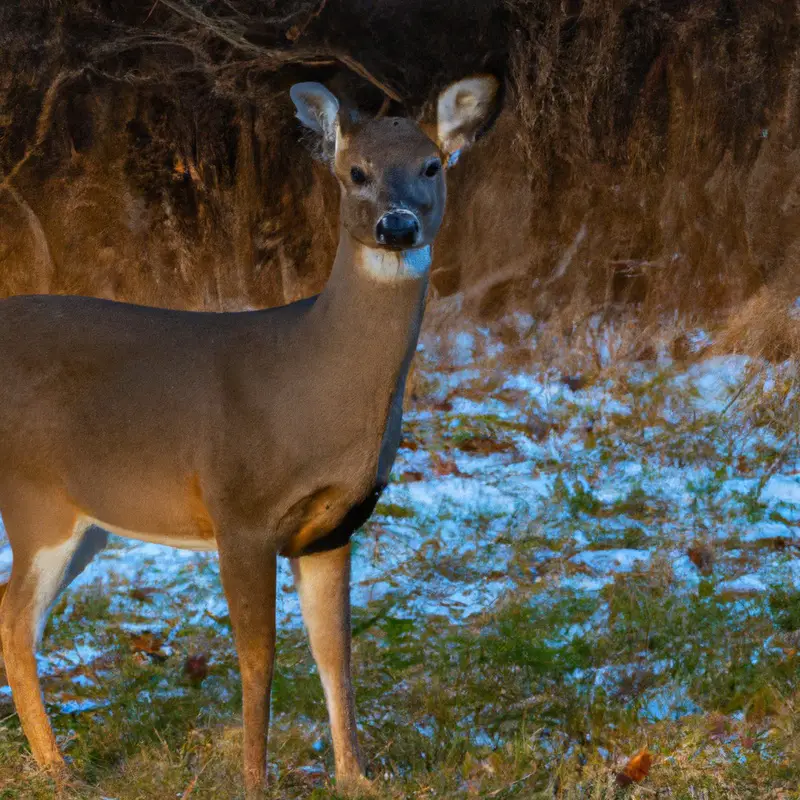
1.3 Modern Gun Season
1.3 Modern Gun Season is an important time for hunting white-tailed deer in Arkansas. During this season, hunters are allowed to use firearms to pursue and harvest deer. It typically takes place for a specific set of dates and is regulated by the Arkansas Game and Fish Commission. Hunters must follow all hunting laws and regulations, including obtaining the necessary licenses and permits. It’s vital to familiarize yourself with specific season dates, bag limits, and weapon restrictions to ensure a safe and successful hunting experience. Remember to always prioritize safety and practice ethical hunting techniques.
1.4 Bag Limits and Licensing
Bag limits and licensing are important considerations when hunting white-tailed deer in Arkansas. It is crucial to be aware of the specific bag limits set by the Arkansas Game and Fish Commission.
These limits specify the number of deer that can be legally harvested during the hunting season.
Additionally, hunters must ensure they possess the appropriate hunting license, which can be obtained through the Arkansas Game and Fish Commission’s website or local vendors. Adhering to bag limits and obtaining the necessary licenses is essential to ensure compliance with hunting regulations and preserve the population of white-tailed deer in Arkansas.
2. Choosing the Right Hunting Grounds
Choosing the right hunting grounds is essential for a successful deer hunting experience in Arkansas.
Here are some key factors to consider:
- Terrain: Look for areas with a mix of open fields and dense wooded areas. Deer tend to prefer cover for security and feed in open spaces.
- Food sources: Identify areas with abundant food sources like acorns, browse, and agricultural crops. These areas attract deer and increase your chances of a successful hunt.
- Water sources: Deer need water to survive, so finding hunting grounds near rivers, streams, or ponds is beneficial.
- Sign of deer activity: Look for signs like tracks, rubs, and scrapes to indicate recent deer activity in the area.
- Access and safety: Consider the accessibility of the hunting grounds, ensuring it is legal, safe, and manageable for you.
By considering these factors, you can increase your chances of finding the right hunting grounds and having a rewarding deer hunting experience in Arkansas.

2.1 Public Hunting Land
Public hunting land in Arkansas is a great option for hunters looking for new hunting spots.
The state offers numerous public hunting areas spread across different regions, providing a variety of landscapes and game opportunities.
These public lands are managed by the Arkansas Game and Fish Commission and offer a range of hunting options, including hunting for white-tailed deer.
Before heading out, make sure to check the specific regulations and requirements for hunting on public land in Arkansas.
2.2 Private Hunting Land
Private hunting land in Arkansas provides exclusive opportunities for hunters to pursue white-tailed deer. With private land access, you have greater control over your hunting experience, including the choice of hunting spots and the ability to manage the land for optimal deer habitat.
It allows you to avoid overcrowded public hunting areas and potential conflicts with other hunters.
Additionally, private land can offer a more peaceful and undisturbed environment for deer, increasing your chances of a successful hunt. Overall, hunting on private land can enhance your hunting experience and improve your chances of bagging that trophy buck.
2.3 Hiring a Hunting Guide
If you’re looking to hire a hunting guide in Arkansas, there are a few things you should consider. First, research the guide’s experience and expertise in hunting white-tailed deer specifically.
Second, ask for references from previous clients to get an idea of the guide’s reputation and success rate.
Additionally, discuss the details of the hunt including timing, pricing, and any additional services provided. Overall, finding a knowledgeable and reliable hunting guide can greatly enhance your hunting experience in Arkansas.
3. Essential Gear for Deer Hunting in Arkansas
When you’re gearing up for deer hunting in Arkansas, there are a few essential items you’ll want to have with you.
Firstly, a dependable rifle or bow that meets the regulations for hunting in the state.
Additionally, you’ll need appropriate ammunition or arrows, binoculars for scouting, and a sturdy tree stand or hunting blind for concealment.
Other important gear includes hunting clothing camouflaged to match the surroundings, a sharp hunting knife for field dressing, and a reliable flashlight for tracking or navigating in the dark.
Don’t forget to pack plenty of water and snacks to keep you fueled during your hunt.
3.1 Firearms and Ammunition
When it comes to firearms and ammunition for hunting white-tailed deer in Arkansas, it’s important to choose the right tools for the job. You’ll want a rifle or shotgun that is appropriate for the size and behavior of the deer in the area.
Typically, a centerfire rifle with a caliber between .243 and .30-06 is recommended.
Make sure you’re using legal ammunition and always follow state regulations. Properly maintaining and sighting in your firearm will also ensure accuracy and a successful hunt.
3.2 Archery Equipment
When it comes to archery equipment for hunting white-tailed deer in Arkansas, there are a few key items you’ll need. Firstly, you’ll need a reliable compound or recurve bow with the appropriate draw weight for your strength and shooting ability.
Make sure to practice with your bow regularly to develop accuracy and confidence.
Secondly, arrow selection is crucial. Look for arrows with the right spine, length, and weight for your bow and setup.
Carbon arrows are often preferred for their strength and consistency.
Lastly, invest in quality broadheads that are sharp and reliable for a clean and ethical kill. Remember to always follow state regulations regarding archery equipment and hunting methods.
3.3 Safety Gear and Clothing
When it comes to hunting white-tailed deer in Arkansas, safety gear and clothing are essential. Here are some key items you should have:
- Blaze Orange Clothing: Wearing at least 400 square inches of blaze orange can help you stay visible to other hunters.
- Ear and Eye Protection: Protecting your ears with earmuffs or plugs and wearing safety glasses is important for your safety in the field.
- Hunter’s Safety Harness: Using a safety harness while hunting from an elevated stand can prevent falls and accidents.
- Snake Boots or Gaiters: These can protect you from venomous snakes that may be present in the area.
- Knee Pads: If you’ll be kneeling or crawling while hunting, knee pads can provide protection and comfort.
Remember, your safety is paramount, so make sure to invest in the necessary gear and clothing. Stay safe and happy hunting!
4. Hunting Techniques and Strategies
When hunting white-tailed deer in Arkansas, it’s important to have effective techniques and strategies in place.
One technique is to scout potential hunting areas beforehand to familiarize yourself with the terrain and deer habits.
Setting up stands or blinds in strategic locations can increase your chances of spotting deer.
Another strategy is to hunt during the early morning or late evening when deer are more active.
Utilizing calls or scents can also attract deer to your location.
Remember to always abide by hunting regulations and prioritize safety during your hunting expedition.
4.1 Stand Hunting
Stand hunting is a popular method for hunting white-tailed deer in Arkansas. It involves finding a stationary position, typically on an elevated platform or tree stand, and waiting for deer to come within range.
This technique is effective because it allows hunters to blend into their surroundings and increases their chances of spotting deer.
When stand hunting, it’s important to choose a location with good visibility and knowledge of deer movement patterns. Patience and silence are key, as any sudden movements or noise can scare away the deer.
4.2 Spot-and-Stalk Hunting
- Spot-and-Stalk Hunting: Spot-and-stalk hunting is a popular technique for hunting white-tailed deer in Arkansas. Here’s how it works:
- Spot your target: Look for deer feeding or moving in open areas or along edges of cover.
- Stay downwind: Use the wind direction to your advantage, staying downwind from the deer to avoid being detected by their keen sense of smell.
- Move stealthily: Approach the deer quietly and slowly, utilizing natural features like trees and bushes for cover.
- Take the shot: Once you’re in range and have a clear shot, aim carefully and take your shot.
Remember to always hunt responsibly and follow all safety regulations. Good luck and happy hunting!
4.3 Calling and Rattling
When it comes to calling and rattling while hunting white-tailed deer in Arkansas, it’s important to use realistic and strategic techniques.
By mimicking the sounds of deer, you can attract them closer to your location.
Try using a variety of calls to imitate different deer vocalizations, such as doe bleats or buck grunts.
Additionally, rattling antlers together can simulate the sound of two bucks fighting, which can pique the curiosity of nearby deer.
Remember to be patient and selective in your calling and rattling efforts, as too much can scare deer away.
4.4 Scent Control and Wind Direction
Scent control and wind direction are vital when hunting white-tailed deer in Arkansas. Deer have an excellent sense of smell, so minimizing your scent is crucial.
Start by washing your hunting clothes in scent-free detergent and storing them in a sealed bag.
Use scent-eliminating sprays to mask any remaining human odor. Additionally, pay attention to wind direction.
Always position yourself downwind from where you expect the deer to appear.
This way, your scent will not carry towards them, increasing your chances of a successful hunt.
5. Field Dressing and Processing Your Harvest
Field dressing and processing your harvest is an important step in hunting white-tailed deer in Arkansas. Here’s what you need to do:
- Start by field dressing the deer, which involves removing the internal organs and properly cleaning the cavity. This helps cool down the meat and prevents spoilage.
- Next, carefully skin the deer to expose the meat. You can choose to quarter the deer for easier handling and transportation.
- Once the meat is exposed, it’s important to properly process it. Trim off any excess fat, sinew, or silver skin and separate the different cuts of meat, such as the tenderloins, backstraps, and shoulders.
- For optimal flavor and tenderness, it’s recommended to age the meat in a cool environment for a few days. This allows the natural enzymes to break down the muscle fibers.
- Lastly, package and store the meat properly. Vacuum-seal or wrap it tightly in freezer paper to prevent freezer burn.
Taking care of your harvest ensures that you’ll have high-quality, delicious venison to enjoy throughout the year.
5.1 Field Dressing Techniques
Field dressing is a critical skill for hunters.
Here are some techniques to ensure a successful and efficient process:
- Begin by laying the deer on its back and using a sharp knife to make an incision from the chest to the pelvis.
- Carefully remove the internal organs, being cautious not to puncture the bladder or intestines.
- Remove the heart, liver, and other edible organs for later preparation.
- Trim excess fat and clean the cavity thoroughly with water.
- Place the deer on its side to allow any remaining blood to drain.
Remember to always handle the carcass with care and be mindful of hygiene to ensure the best quality meat for consumption.
5.2 Skinning and Butchering
Skinning and butchering are essential skills for any deer hunter.
After a successful hunt, you’ll need to skin the deer to remove the hide and get ready for the butchering process.
Start by making an incision along the belly and carefully peel the hide back.
Take your time to avoid puncturing the organs.
Next, you’ll want to butcher the deer, which involves cutting the meat into manageable pieces.
Start by removing the quarters and then proceed with separating the backstraps and tenderloins.
Finally, debone the meat and trim off any excess fat.
Remember to always be cautious with your knife, as safety should be your top priority.
Additionally, ensure that you properly clean and store the meat to maintain its quality.
Developing your skills in skinning and butchering will not only enhance your hunting experience but also provide you with delicious, high-quality venison to enjoy throughout the year.
Happy hunting!
5.3 Commercial Processing Options
When it comes to commercial processing options for hunting white-tailed deer in Arkansas, there are several choices available to you.
Here are a few examples:
- Local Butchers: Many local butchers offer deer processing services, where they can transform your harvested deer into different cuts of meat, sausages, and jerky. They can also package and store the meat for you.
- Game Processors: Specific game processors specialize in processing wild game, including deer. These professionals have the expertise and equipment to ensure that your deer is processed correctly and in a safe, sanitary manner.
- DIY Processing: If you prefer to process the deer yourself, you can find a range of processing equipment, such as meat grinders, saws, and vacuum sealers, online or at sporting goods stores. There are also instructional videos and books available to guide you through the process.
Remember, when choosing a commercial processing option, consider factors such as reputation, price, and the services they offer.
Ultimately, the choice depends on your personal preferences and convenience.
Happy hunting!
6. Cooking and Recipes for Venison
Cooking and Recipes for Venison:
- When it comes to cooking venison, it’s important to remember that this meat is lean, so it can dry out quickly. To prevent this, marinate the meat overnight to add flavor and moisture.
- Some popular cooking methods for venison include grilling, roasting, or slow cooking in a stew or chili.
- For those who prefer a more tender texture, consider using a slow cooker or pressure cooker to ensure the meat stays moist and tender.
- When it comes to seasoning, simple is often best. Salt, pepper, garlic, and herbs, such as rosemary or thyme, complement the natural flavor of venison without overpowering it.
- Beyond traditional cuts like tenderloin and steaks, venison can be used in various recipes like burgers, tacos, or even meatloaf.
- Remember to cook venison to medium-rare or medium to avoid overcooking and resulting in tough meat. Use a meat thermometer to ensure it reaches an internal temperature of 145°F (63°C.
- Lastly, always let your venison rest for a few minutes before slicing or serving to allow the juices to redistribute and keep the meat tender and flavorful.
6.1 Preparation Tips
Preparation is key when hunting white-tailed deer in Arkansas. Here are some tips to get you ready:
- Scouting is essential. Spend time in the field, looking for signs of deer activity like tracks, rubs, and scrapes. This will help you identify their feeding and bedding areas.
- Familiarize yourself with the hunting regulations. Know the bag limits, season dates, and any special restrictions in the area where you plan to hunt. It’s important to always hunt within the legal framework.
- Practice your shooting. Take time to sight in your rifle or bow and get comfortable with your equipment. Accuracy is crucial and can make the difference between a successful shot and a missed opportunity.
- Dress for success. Layer your clothing appropriately for the weather conditions. Be sure to wear camouflage to blend in with the surroundings. Don’t forget essentials like a hat, gloves, and comfortable hunting boots.
- Prepare your gear. Make sure you have all the necessary supplies such as binoculars, a flashlight, a knife, and field dressing equipment. Keep them organized and easily accessible in your hunting pack.
- Create a hunting plan. Determine your hunting location and strategy based on your scouting observations and knowledge of the deer’s behavior. Consider wind direction and other factors that may affect your success.
6.2 Popular Venison Recipes
Let me share with you some popular venison recipes that you might enjoy trying out:
- Grilled Venison Steaks with Rosemary: Marinate the steaks in a mixture of olive oil, garlic, rosemary, salt, and pepper. Grill until cooked to your desired level of doneness.
- Venison Chili: Brown ground venison with onions and garlic. Add tomatoes, kidney beans, chili powder, cumin, and a touch of cocoa powder for depth of flavor. Simmer until the flavors meld together.
- Venison Kabobs: Skewer chunks of venison meat along with your favorite vegetables like peppers, onions, and mushrooms. Brush with a marinade of soy sauce, garlic, honey, and olive oil. Grill until the meat is cooked through and the veggies are tender.
- Venison Stew: Slow-cook venison with potatoes, carrots, onions, and a rich beef or vegetable broth. Add herbs like thyme or bay leaves for extra flavor. Let it simmer until the meat is tender and the flavors have melded.
- Venison Jerky: Slice venison into thin strips and marinate in a mixture of soy sauce, Worcestershire sauce, liquid smoke, and spices. Dehydrate the meat in an oven or food dehydrator until it becomes a tasty, portable snack.
Remember to always keep the cooking time in mind when working with venison. Since it is a lean meat, cooking it for too long can result in dryness.
Enjoy experimenting with these recipes and finding your own favorites!
7. Frequently Asked Questions (FAQ)
- Frequently Asked Questions (FAQ
- How much does a hunting license cost in Arkansas?
Arkansas offers different types of hunting licenses, with prices varying depending on the type and duration of the license.
For residents, a basic hunting license costs $10.50, while non-residents pay $300 for an annual hunting license.
There are also additional fees for certain types of hunting, such as deer tags, so it’s best to check the Arkansas Game and Fish Commission’s website for the most up-to-date information.
2. When is the deer hunting season in Arkansas?
The deer hunting season in Arkansas varies depending on the hunting zone and the type of deer being hunted.
Generally, the archery season starts in mid-September and runs through February.
The modern gun season usually begins in mid-November and lasts for a few weeks.
However, it is important to check the specific hunting regulations for your hunting zone, as dates and bag limits may vary.
3. Can I use bait while hunting deer in Arkansas?
Yes, Arkansas allows the use of bait while hunting deer.
However, there are regulations to follow.
Bait may only be placed and hunted over on privately owned or leased lands, and the bait must be removed within 10 days of the end of deer hunting season.
It’s essential to review the specific guidelines outlined by the Arkansas Game and Fish Commission to ensure compliance with the law.
4. Are there any restrictions on hunting deer with a firearm in Arkansas?
Yes, there are restrictions on hunting deer with a firearm in Arkansas.
One important restriction is that only rimfire or centerfire rifles and handguns are allowed for deer hunting; shotguns and muzzleloaders are not permitted.
Additionally, there are specific magazine capacity restrictions for firearms used during deer hunting.
It’s crucial to familiarize yourself with all the regulations before heading out to hunt.
5. Do I need to wear hunter orange while deer hunting in Arkansas?
Yes, wearing hunter orange is mandatory for deer hunters during firearms deer seasons in Arkansas.
This requirement aims to increase visibility and promote safety in the field.
Hunters must wear a minimum of 400 square inches of hunter orange conspicuously displayed on their head, chest, and back.
Camouflage hunter orange patterns are acceptable.
Remember to prioritize safety and comply with this regulation.
6. Are there any special hunting considerations for youth hunters in Arkansas?
Yes, Arkansas provides special hunting opportunities for youth hunters.
There are designated youth hunting seasons, where young hunters get priority and can hunt before the regular seasons open.
Additionally, there are specific bag limits and age requirements for youth hunters.
It’s advised to consult the Arkansas Game and Fish Commission’s regulations to ensure compliance with all the rules for youth hunting.
7. Can I hunt deer at night in Arkansas?
No, hunting deer at night is prohibited in Arkansas.
The official hunting hours for deer are sunrise to sunset.
It is important to respect these regulations and prioritize safety by adhering to legal hunting hours.
Hunting after legal hours is not only against the law but also poses risks to yourself and others in the field.
Hunt responsibly and within the designated hunting hours.
7.1 What is the hunting season for white-tailed deer in Arkansas?
The hunting season for white-tailed deer in Arkansas typically runs from October to February. It opens with muzzleloader and modern gun seasons, followed by a youth gun season.
There are also archery and crossbow seasons that begin earlier in the year.
It’s important to check the specific dates and regulations set by the Arkansas Game and Fish Commission as they may vary each year. During the hunting season, you’ll have the opportunity to pursue white-tailed deer in Arkansas’s beautiful outdoors.
Happy hunting!
7.2 How can I obtain a hunting license in Arkansas?
To obtain a hunting license in Arkansas, you can do so online through the Arkansas Game and Fish Commission’s website. Simply visit their website, create an account, and complete the necessary steps to purchase your license.
Alternatively, you can also obtain a hunting license by visiting a local authorized license vendor in person.
Make sure to have the required documentation and fees ready when applying. It’s important to stay up-to-date with any regulations or changes regarding hunting licenses in Arkansas, so be sure to check the AGFC website for the latest information.
7.3 Are there any special regulations for hunting white-tailed deer in Arkansas?
In Arkansas, there are some special regulations in place for hunting white-tailed deer. It is important to know and follow these regulations to ensure a responsible and legal hunting experience.
Some of the regulations include specific hunting seasons and dates, limits on the number of deer you can harvest, and the use of certain hunting methods or equipment.
There may also be restrictions on hunting locations or specific areas where hunting is not allowed. It’s crucial to familiarize yourself with these regulations before heading out to hunt, as they help protect the deer population and promote sustainable hunting practices.
7.4 What is the bag limit for white-tailed deer in Arkansas?
The bag limit for white-tailed deer in Arkansas is four deer per hunting season. This includes no more than two bucks and no more than two antlerless deer.
This limit is important to ensure sustainable hunting practices and maintain the deer population.
When hunting, it’s crucial to follow the bag limit regulations to promote conservation and preserve the future of hunting in Arkansas.
7.5 Can I use a rifle for deer hunting in Arkansas?
Yes, you can use a rifle for deer hunting in Arkansas. The state allows the use of rifles with certain restrictions.
Rifles with centerfire ammunition are permitted during the modern gun season, which usually runs from mid-November to December.
However, it is important to check the specific regulations for the area you plan to hunt, as there may be restrictions on caliber and other requirements. Additionally, during other hunting seasons, such as archery or muzzleloader, rifles may not be allowed.
Always be sure to familiarize yourself with the current hunting regulations to ensure compliance.
7.6 How should I dress for a white-tailed deer hunt in Arkansas?
When dressing for a white-tailed deer hunt in Arkansas, it’s important to prioritize comfort and camouflage. Wear layers to adapt to changing temperatures and weather conditions.
Choose clothing in earth tones to blend into the surrounding environment.
Opt for scent-free options to minimize your scent and avoid alerting deer to your presence. Don’t forget a good pair of sturdy, waterproof boots to keep your feet dry and comfortable throughout the hunt.
7.7 What should I do after harvesting a white-tailed deer?
After harvesting a white-tailed deer, there are a few important steps to take. First, be sure to tag the deer as required by your state regulations.
Then, field dress the deer by carefully removing the organs and entrails.
Next, bring the deer to a cool location to prevent spoilage. It’s best to age the deer for a few days to enhance the flavor.
Finally, process the deer by either butchering it yourself or taking it to a professional processor.
Enjoy the delicious reward of your hunt!
7.8 What are some popular ways to cook venison?
There are several popular ways to cook venison that are favored by many people. Some of these include grilling, roasting, and slow cooking.
Grilling venison steaks or burgers can create a delicious smoky flavor, while roasting a whole venison loin can result in a tender and flavorful centerpiece for a meal.
Slow cooking techniques, such as using a crockpot or braising, can help tenderize the meat and infuse it with savory flavors. Other popular methods include marinating, frying, or using the venison in stews and chili.
Final Verdict
Hunting white-tailed deer in Arkansas offers a thrilling and rewarding experience for outdoor enthusiasts.
With a well-regulated hunting season and various techniques to choose from, hunters have ample opportunities to pursue their prey.
From selecting the right hunting grounds to acquiring the necessary gear and honing hunting strategies, hunters can increase their chances of success.
Additionally, proper field dressing and processing techniques ensure that the harvested deer can be enjoyed through delicious venison recipes.
Arkansas truly provides an exceptional hunting experience for those seeking the challenge and beauty of hunting white-tailed deer.
